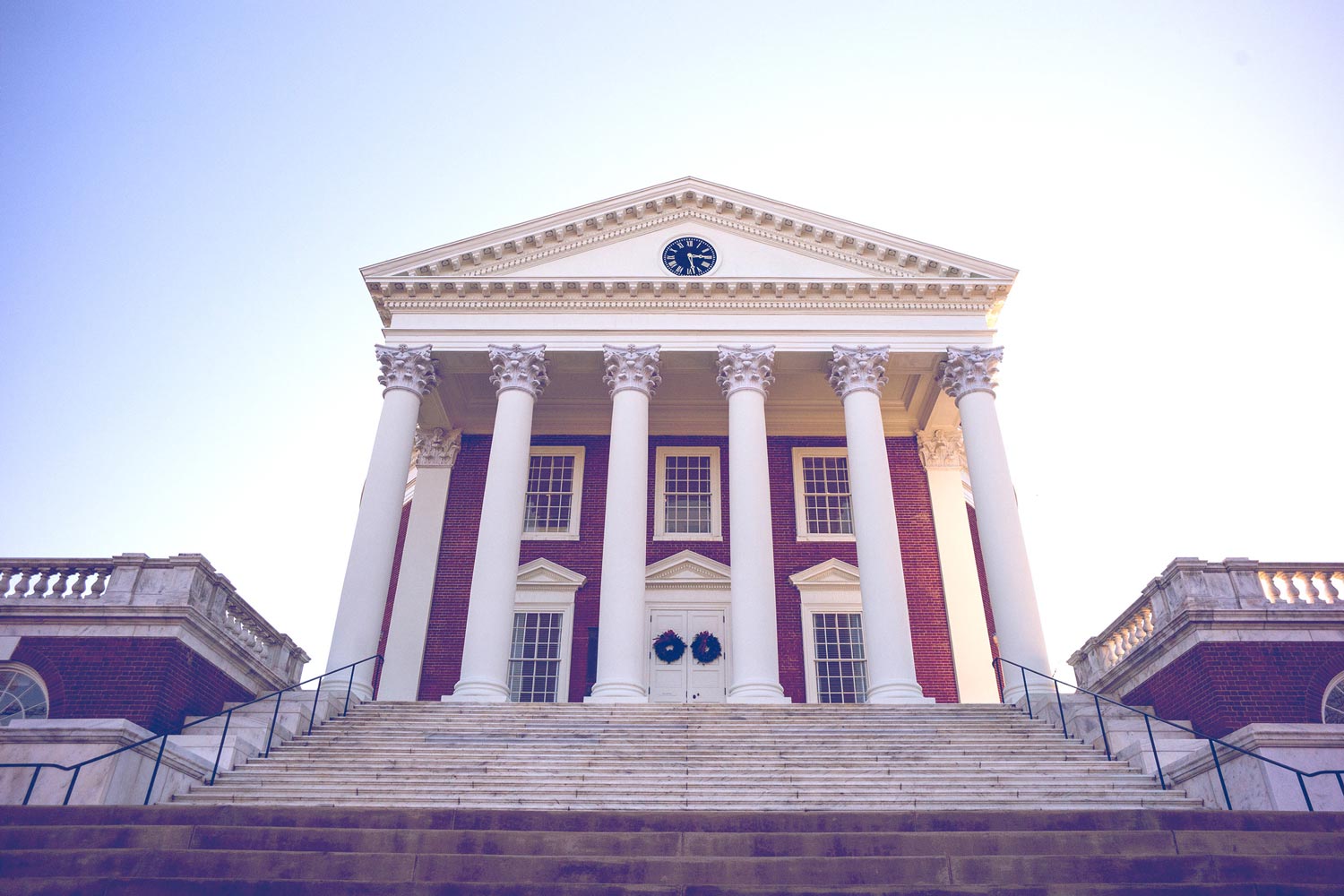The University of Virginia Board of Visitors on Friday approved a 2.5 percent increase in tuition for most undergraduate Virginians entering in fall 2018, and a 3.5 percent increase for most entering out-of-state students.
The tuition structure for the 2018-19 academic year includes a 2.5 percent increase for all returning in-state students across schools (amounting to between $308 and $436, depending on the school) and a 3.5 percent increase for all returning out-of-state students across all schools ($1,530 to $1,712, depending on the school).
It will be the third consecutive year that increases have been held at or below the rate of inflation for most in-state students.
“The University of Virginia is committed to offering an excellent education at an affordable price,” Executive Vice President and Chief Operating Officer Pat Hogan said. “We welcome talented students with no consideration of their ability to pay, limit their exposure to loan-based debt and assist middle- and low-income Virginia families by setting tuition rates that protect UVA’s status as one of America’s best values in higher education.”
Some 70 percent of UVA’s undergraduate students are enrolled in either the College of Arts & Sciences or the Curry School of Education. For those in-state, first-year students, the 2.5 percent increase sets tuition for 2018-19 at $13,682, or $334 more than what current first-year students are paying. Tuition for out-of-state students entering the College or Curry will increase by $1,530, to $44,724.
For entering students in schools other than the College or Curry, the tuition structure adjusts tuition in varying amounts – a reflection of the differing instructional and programmatic needs in individual schools. That blend of rates among schools and among classes supports the University’s key priorities: a commitment to maintain affordability for Virginians, but also a recognition that significant investments are necessary to ensure the quality of the educational experience overall and to address strategies and specific needs at the school level.
Overall, the weighted average tuition increase for all in-state UVA students is 3.3 percent, and the weighted average for non-Virginians is 3.9 percent.
The University continues its commitment to meet 100 percent of demonstrated financial need of all undergraduate students, and offers admission to students with no consideration of their family financial situation. UVA also caps loans for low-income Virginians at a maximum of $1,000 per year, with a maximum of $4,500 per year for all other Virginia students with demonstrated financial need.
Last December, the Board of Visitors also approved the establishment of the Bicentennial Scholars Fund, a permanent endowment that could reach a value of $300 million through philanthropic support and disbursements from the UVA Strategic Investment Fund. Earnings from the Bicentennial Scholars Fund will provide need- and merit-based scholarships for undergraduate students, while relieving pressure on long-term tuition increases by funding need-based aid from this fund instead of from tuition revenue.

In January, the board authorized the Cornerstone Grant program, which provides University-funded grants to qualifying, full-time undergraduate Virginia students from middle-income families earning less than $125,000.
Such efforts have bolstered UVA’s educational value, and its ability to attract and retain increasing numbers of underrepresented students and expand the breadth and depth of its cultural and socioeconomic diversity.
For example, institutional data for 2017 indicate that since 2012:
- First-year minority student enrollment has increased by 38 percent;
- African-American enrollment of first-year students has increased by 41.5 percent;
- UVA received applications from 2,271 African-American students in 2017, an increase of 600 versus 2012;
- First-generation student enrollment is up by 42 percent; and
- Enrollment of students with Pell Grant eligibility has increased by an estimated 34.3 percent.
The Board of Visitors this year moved up the review and approval process for tuition and fees, which previously had occurred after the new year. University officials said the earlier decision allows UVA to develop and share financial-aid packages with students and their families sooner, providing prospective students better information on which to make college decisions and giving returning students more time to plan for the next academic year.
The 2018-19 tuition plan supports the University’s ongoing efforts to recruit and retain faculty and staff; addresses needs including information technology resources and physical security; and accounts for ongoing uncertainties regarding state support.
The plan is built with the assumption that state revenue will be consistent with the current year’s level. Significant changes in that support could result in UVA administrators requesting the board to consider an adjusted rate.
The tuition plan also includes a $110 increase in the mandatory comprehensive fee for all regular-session students. Of the increase, $5 will be directed to meet planned University compensation increases for employees and operational needs in University Transit, Newcomb Hall and Student Health & Wellness, while $4 will provide increased arts offerings for students across Grounds. The remaining $101 will address increases in student health volume in the areas of general medicine, counseling and psychological services, and accessibility needs across Grounds.
Media Contact
Article Information
December 7, 2017
/content/tuition-structure-2018-19-advances-commitment-affordable-excellence-0

